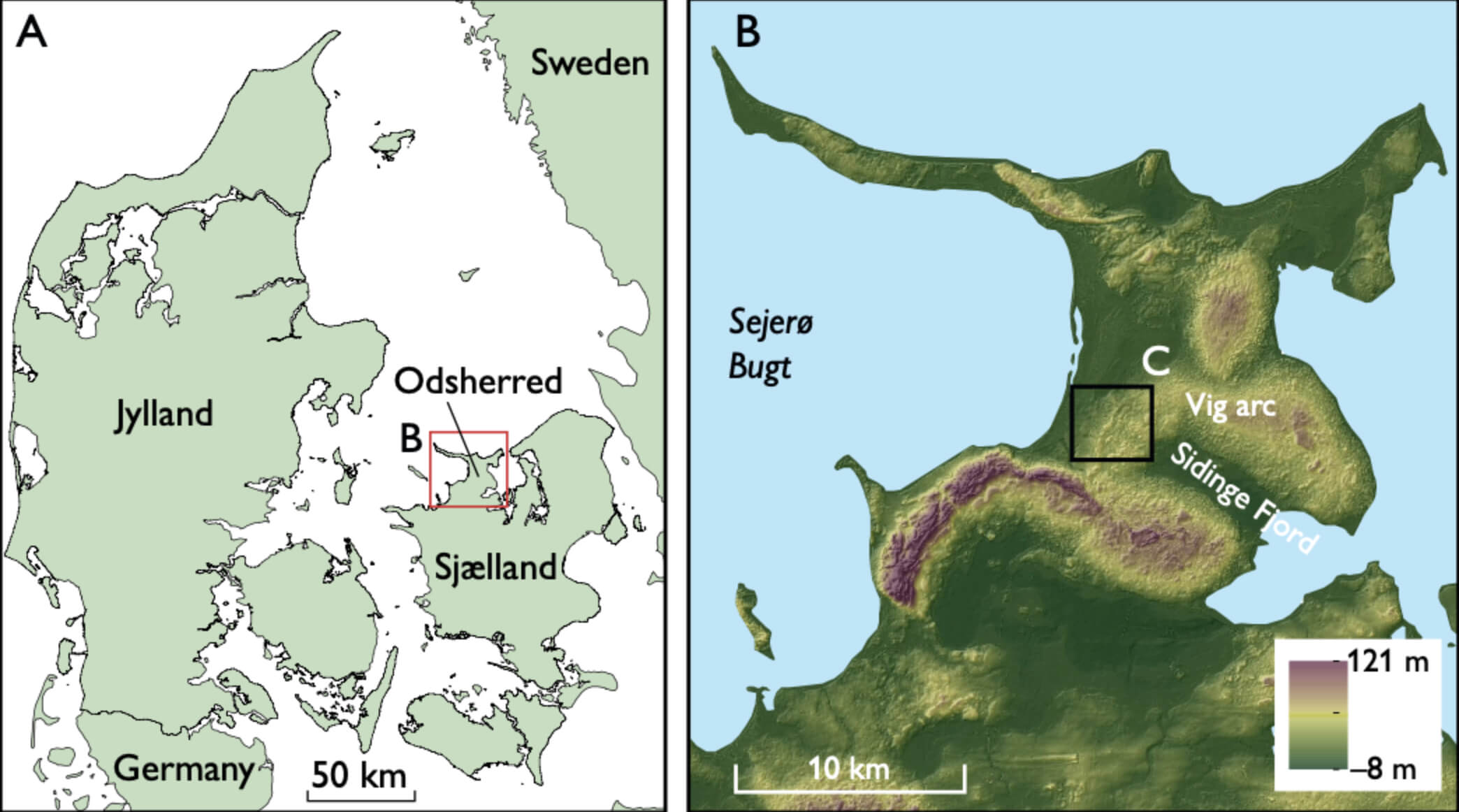
How to Cite
Share
Abstract
Glaciotectonic deformations often result in a high degree of variability, including glaciotectonic and sedimentary variability. Redeposition of sediments during deformation increases the variability. Ground-penetrating radar (GPR) has proven to be a good method to determine sedimentary structures in glaciofluvial deposits (Olsen & Andreasen 1994; Van Overmeeren 1998) as well as glaciotectonic structures (Busby & Merrit 1999; Overgaard & Jakobsen 2001). Reflection facies analysis (radar facies) is a useful tool in the characterisation and interpretation of deformed sediments (Van Overmeeren 1998; Jakobsen & Overgaard 2002; Lerche et al. 2014). A GPR survey was carried out at Jyderup Skov in Odsherred in north-west Sjælland (Fig. 1). The presence of parallel ridges in the area indicates glaciotectonic deformation. The aim of the GPR study was to map the interior of the ridge complex and to interpret the genesis of the ridges.
How to Cite
Share
Downloads
Editors Adam A. Garde, Ole Bennike and W. Stuart Watt
The 22 contributions in this issue of Review of Survey activities demonstrate the broad field of activities performed by the Geological Survey of Denmark and Greenland and external partners.
Seven papers on Danish geology comprise an investigation of reservoir sandstones for oil [...]










